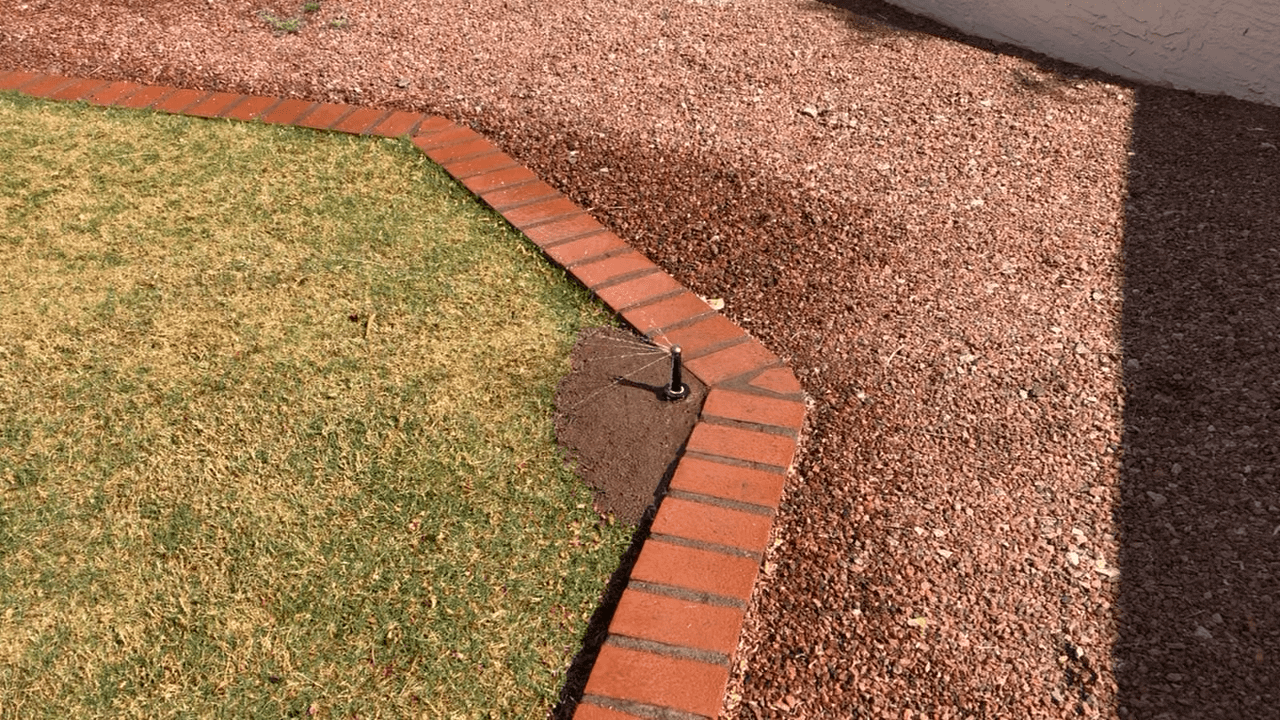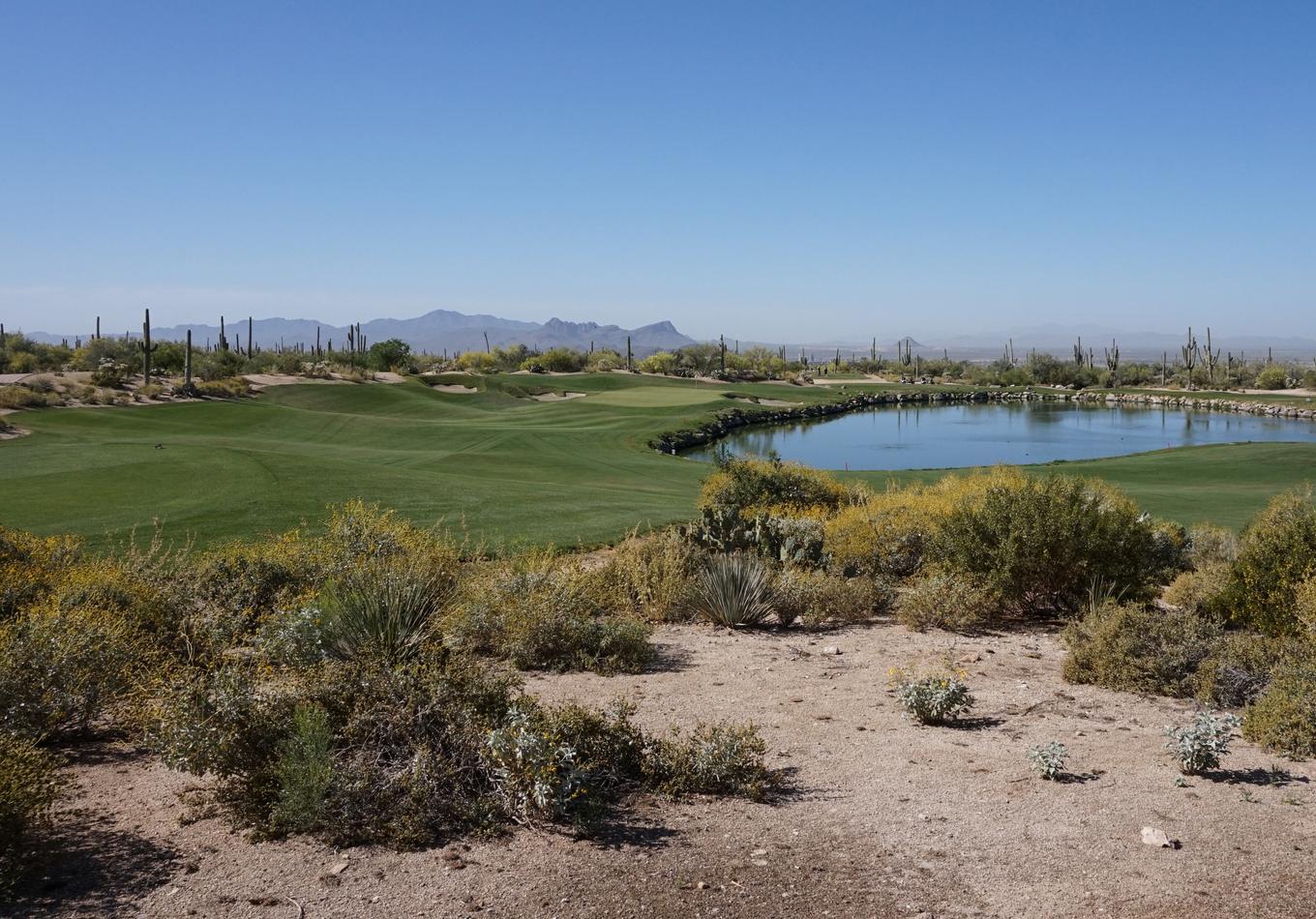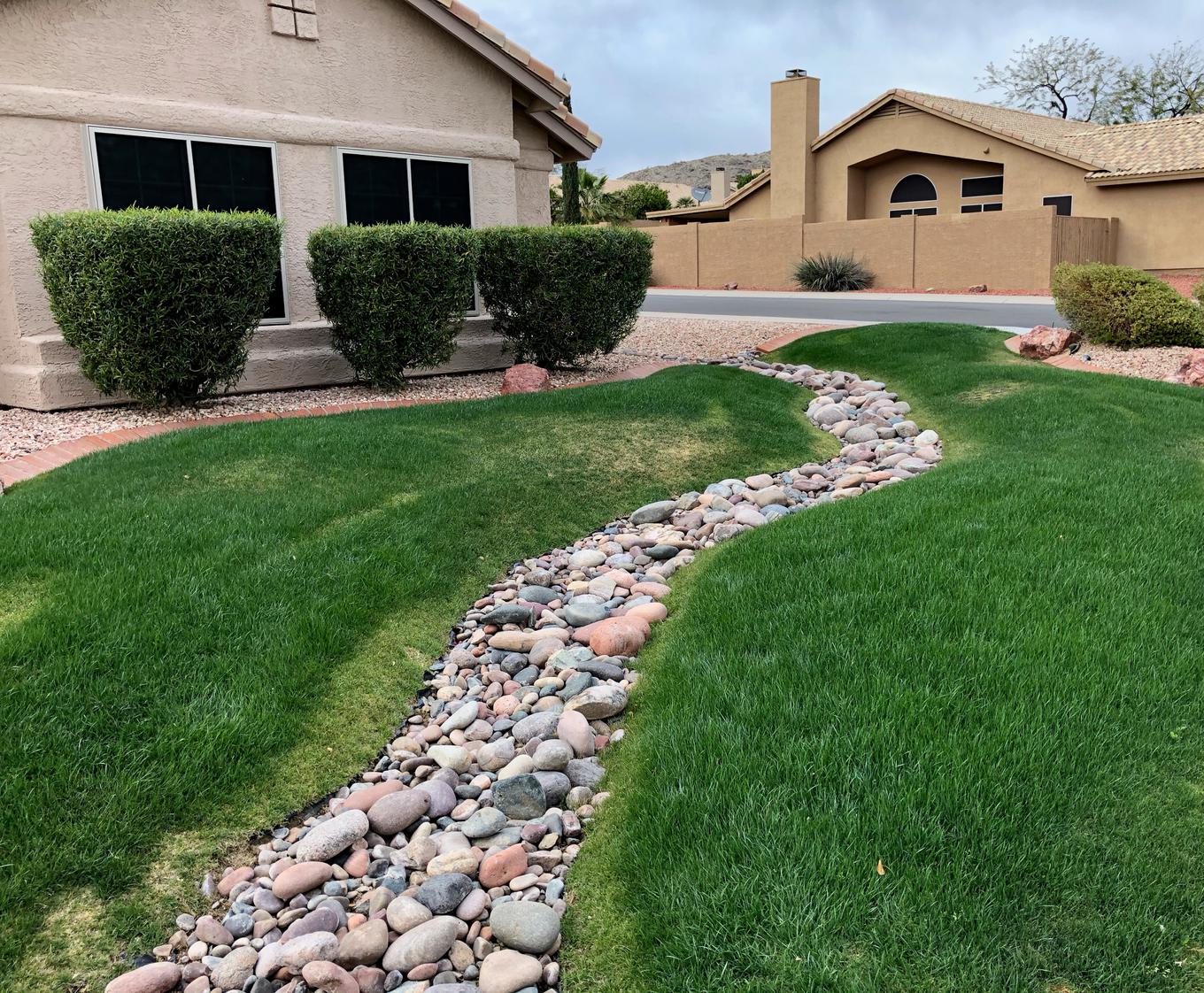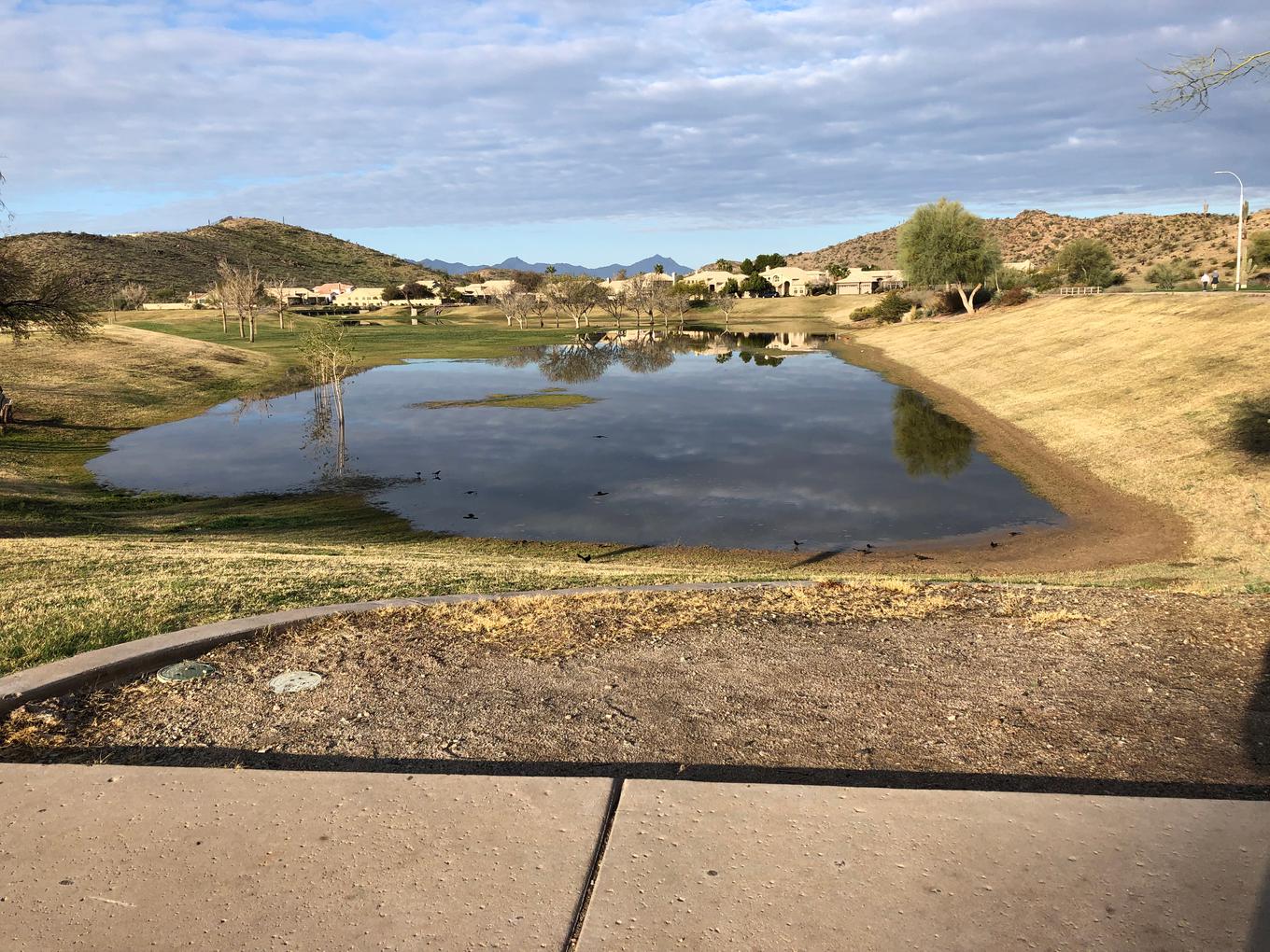Ch 1: Pools, Ponds, Lawns
{Google Maps screenshot of a few streets near my house in which every backyard has a pool}
Pools
Everyone in my immediate neighborhood has a pool, as far as I can tell. If not every last house, then nearly every last house. If your home is in middle-to-upper-class suburban Phoenix and you do not have a pool, you fear a decrease in the resale value. My house has a pool. Technically, it’s a “swim-spa” because it is only four-feet deep all around and just 14 feet long. Fourteen feet may sound sizeable, but in comparison to an average Phoenix suburban pool, that’s quite small. My pool is outfitted with a heater and jets; the jets are designed to allow a person to swim in place against the current in this tiny pool. My dad once tore his meniscus doing just that. In fact, my dad pretty much wants the pool gone, and not just because it caused his meniscus to tear. The pool requires a lot of upkeep. However, draining and then filling a pool in with concrete is an expensive ordeal—almost as expensive as building a brand-new pool. Plus, my dad is on the verge of retirement. If he might be selling the house in a couple of years, what’s the use? Any young, Arizona family or snowbird couple will seek out a house with a pool for the kids or grandkids. Getting rid of a pool in Arizona is borderline Desert Blasphemy. My family and I have hardly used our pool since my brother and I graduated from middle school, but the pool is there to stay.
Growing up in Arizona, part of the culture is pool culture. And while I write this from my middle-to-upper-class suburban perspective, I have observed that pool culture permeates class lines. While the form of the pool might change, the fact that there is a pool remains constant. I recall flying into Phoenix’s Sky Harbor Airport once, noticing a common appendage to the small homes in lower-class areas of Phoenix. In the yards of most of these homes were those small, circular blow-up or plastic kiddy pools. Their circular shape was unmistakable from the sky. So, when I say there is a “pool culture” in Phoenix, I mean that, as I was growing up, I went to who-knows-how-many pool parties to celebrate my friends’ birthdays. That I learned how to swim in my own backyard and so did my dog (or at least he tried). That when girls get older and begin succumbing to the expectations of social media, they post endless photos of themselves seductively posing by the poolside in bikinis. That in my neighborhood, there are three “community pools” maintained by the home-owners association, meaning that if there is a park, there is likely to be a pool accompanying it. That in middle school I remember going to the local waterpark with my neighborhood friend and getting 7/11 slushies afterwards. Pools, to me growing up, were a given, like a natural resource that is plentiful. Pools have always been there and always will be. A fact of life for me.
{Mandy as a child, swimming in her Aunt’s pool in Paradise Valley, AZ}
Ponds
I have always hated ponds. To me, ponds were always associated with fakeness. Ponds were collections of water placed in places they weren’t supposed to be. Their water was a color of blue that I knew was incorrect. The fountain at their middle was so manufactured that it made me despise the water the pond held. The ponds along the greenbelt, the large ponds in the Lakewood neighborhood made it excessively clear that the place I lived in was perfectly developed, intricately manicured, and filled with things that weren’t meant to be there: palm trees brought in from California, lush grass, and blue-dyed water pumped in from who-knows-where. Those ponds made me feel like I was in the 2012 version of the Lorax, living in Thneedville with its electric trees, like the Oak-a-Matic. I longed to live somewhere that had real trees and real water. I didn’t yet understand the allure of the desert. I also certainly did not understand the possibility that water can be naturally abundant in a desert, though that seems to be a contradiction. Water was something imported, not found. Water was poured into concrete pools, or ponds—bigger concrete pools. Water in the desert isn’t real.
Lawns
{The new water-efficient sprinklers in my backyard. One of my more vivid memories from my childhood is an intense argument between my parents about whether we should plant winter grass in the backyard.}

Worst of all, I associated ponds with golf courses. Golf courses were the epitome of desert falsehood. They combined all the fabricated components that I despised most: lush grass sustained by endless sprinkler systems, towering palm trees that are native to the California, not the Arizona desert, and so many ponds. Arizona has long been an attraction for winter golf, but two of the golf courses in my immediate area have been deserted in the past decade. They are now eyesores that consist of dying grass and empty concrete basins that were once ponds. It is as if the land has taken its makeup off. Now, the debates ensue—how about new condominiums? What about the homeowners who signed off on their property being told that their backyard would always face an operating golf course? To grow grass or not to grow grass, that is the question.
{Hole #3 at The Golf Club at Dove Mountain, Marana, Arizona}
(Bernard Gagnon, CC BY-SA 3.0 https://creativecommons.org/licenses/by-sa/3.0, via Wikimedia Commons)
My front yard exhibits desert landscaping including a mesquite tree, prickly pear cactus, gravel, and river rocks. However, many homeowners in my neighborhood choose extravagantly verdant landscaping options. My backyard’s cinder block wall started crumbling as a result of the next-door-neighbor’s overwatering of his jungle-like backyard. Others find a middle ground, like the above photo of a neighbor’s lush grass bisected by the classic river rock design.
Though rare, big storms sometimes roll through Phoenix. Especially in the late summer, when Phoenix experiences monsoon season. These monsoons often entail a massive dust storm called a “haboob,” which is generally followed by a heavy rain. Whenever a large amount of water is deposited from the sky, it has a hard time soaking into the dirt and runs off the slick ground to collect in a low point. The above picture is evidence of the pond that forms in the bermuda grass park next to my high school. It might actually qualify as a lake.
The Desert’s Envy
They say the grass is always greener on the other side, but in the desert’s case, the grass is always greener if you plant it in the first place, and then subsequently barrage it with an inordinate amount of water. In the desert, you will find novelties such as the saguaro cacti that only exist within the bounds of the Sonoran desert. However, you will also find relics of Westward expansion’s nostalgia for the lush Eastern United States. In the desert, the social construction of nature is displayed quite literally, but physically speaking, is perhaps more of an actual construction, or importation of nature. Like when someone in New York City places a cactus in their windowsill.
The social construction of nature in this case is much more apparent in my own interpretation of this imported nature. I find myself, put bluntly, disgusted by this imported nature, like the golf course ponds, but only because my reference point consists of my socially constructed definition of nature. Growing up in Phoenix, I was somewhat offended that we would direct so many natural resources towards replicating natural features that were meant to be located in other regions. I felt the contrast between South Mountain Park—the seemingly untouched natural space beyond my house—and the manufactured suburban area that flanked its south side. The trails and roads that carve out South Mountain never got on my nerves, whereas concrete and asphalt sprinkled with plots of green and pools of bright blue certainly did. I now realize that my relative satisfaction with nature is socially constructed and dependent on obscuration. That is, if a feature does a good job at passing as natural, I will accept it and adore it. However, if a feature is visibly assembled by human intervention, I become frustrated and discount it as nature at all. Thus, if I was never introduced to the knowledge that the massive lakes resultant of dams were the outcome of manipulation, I would be in awe of their natural beauty. These lakes do a better job of mimicking my idea of nature than the ponds filled with ducks and fountains in my neighborhood, but even now I would never take a picture of the pond, whereas I would certainly be tempted to take a picture of the dam lake.
No matter how well they pull off the act, these “unnatural” features are representative of a desert ideal—a place with the mysticism of the desert but the ammenities of the forest. On the final page of his book Dead Pool: Lake Powell, Global Warming, and the Future of Water in the West, James Powell asks, “can we save the desert civilization that [the dams] symbolize?” The alteration of natural resources is a visible signal of modernity and scientific progress. These engineering breakthroughs act as reassurance that our idealistic “desert civilization” is running smoothly. The desert is now calculated and planned. What could possibly go wrong?
In the next chapter, I will transition back to “natural” features, for example, the naturally occurring Havasupai Falls, which is much more glorious than the miniature pool waterfalls that are abundant in my neighborhood.
References
Powell, James Lawrence. Dead pool: Lake Powell, global warming, and the future of water in the West. Univ of California Press, 2008.



